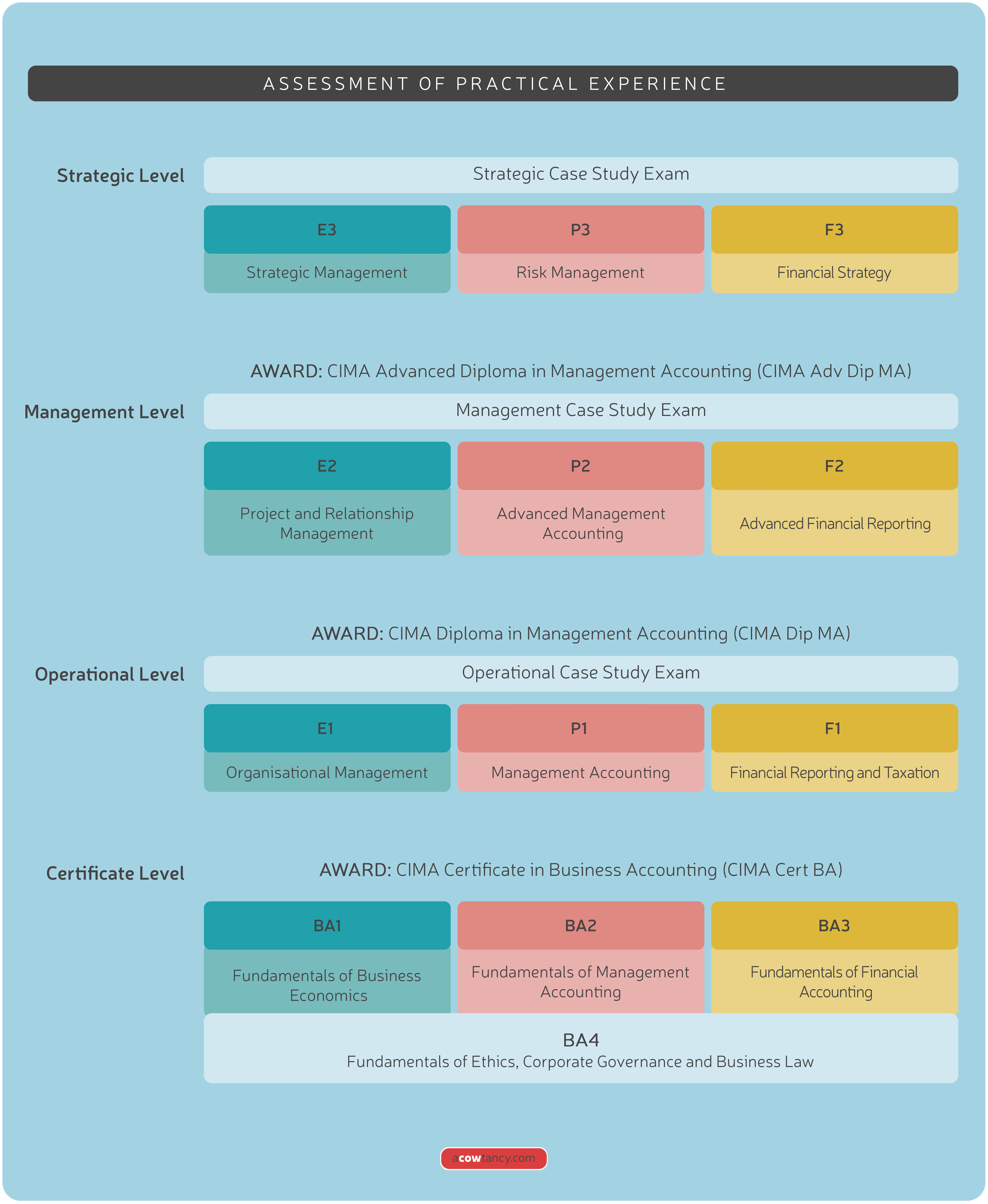Cima Exam Structure
The CIMA Exam Structure
Who can take the CIMA Exam?
Candidates must either obtain:
-
Certificate in Business Accounting from CIMA or
-
Master’s degree or equivalent accounting qualification
The CIMA Exam, formally known as the Professional Qualification, consists of:
-
Operational level
-
Management level
-
Strategic level
In each level, there are 3 pillars:
-
Enterprise pillar (E)
This pilar covers organisation management topics
-
Performance pillar (P)
This pilar covers management accounting topics
-
Financial pillar (F)
This pilar covers financial reporting topics
You have to complete one level to move on to the next. This is a sequential exam.
The following chart explains the CIMA exam structure:
How Many Papers/exams are there in CIMA?
There are 12 exams:
-
E1, P1, F1 + Case study
-
E2, P2, F2 + Case study
-
E3, P3, F3 + Case study

CIMA Levels Structure
-
Operational Level
This level covers the role of junior accountants — the implementation of strategy and related reporting.
Candidates will learn how to prepare financial statements, provide management accounting information, and use appropriate tools to make business decisions.
The 3 objective tests are:
Organisational Management (E1)
Management Accounting (P1)
Financial Reporting and Taxation (F1)Once you complete this level, you obtain the CIMA Diploma in Management Accounting.
-
Management Level
This covers the role of managers — to be the bridge between senior management and staff, between strategy and implementation.
The work focuses on monitoring and reporting.
The candidates will learn how to prepare group accounts, make pricing and product decisions, and manage projects and relationships.
The 3 objective tests are:
Project and Relationship Management (E2)
Advanced Management Accounting (P2)
Advanced Financial Reporting (F2)Once you complete this level, you obtain the CIMA Advanced Diploma in Management Accounting.
-
Strategic Level
This level covers the role of senior management — the syllabus concentrates on making strategic decisions and providing the context for which those decisions will be implemented.
Candidates learn how to formulate financial strategy, manage strategic relationships, and identify and manage risk.
The 3 objective tests are:
Strategic Management (E3)
Risk Management (P3)
Financial Strategy (F3)Upon completion of the Strategic level, candidates will be eligible to submit their practical experience for assessment.
CIMA Masters Gateway Exam
For those with a master’s degree in accounting or an MBA, you can choose the accelerated path by taking the CIMA Masters Gateway exam.
If passed, you can skip the first two levels and go straight to the Strategic level.
The CIMA Masters Gateway Exam has the lowest pass rate among all CIMA tests.
One must put in the effort in order to take advantage of this fast track.
CIMA Exam Format
-
Objective Tests
The candidates can take the Objective Test in each level in any order, but they have to pass all 3 before taking the Case Study exam in that level.
The Objective Tests have a distinct syllabus based on the level and learning pillar.
Each test is 90 minutes long and comprises multiple choice questions.
-
Case Study Exam
In contrast to the Objective Tests, the Case Study exams combine the knowledge and learning across the 3 learning pillars, and are set within a simulated business context related to 1-2 fictional organisations (but based on real business scenarios).
Each case study exam is 3 hours long.
Candidates are required to provide short answers and essays.